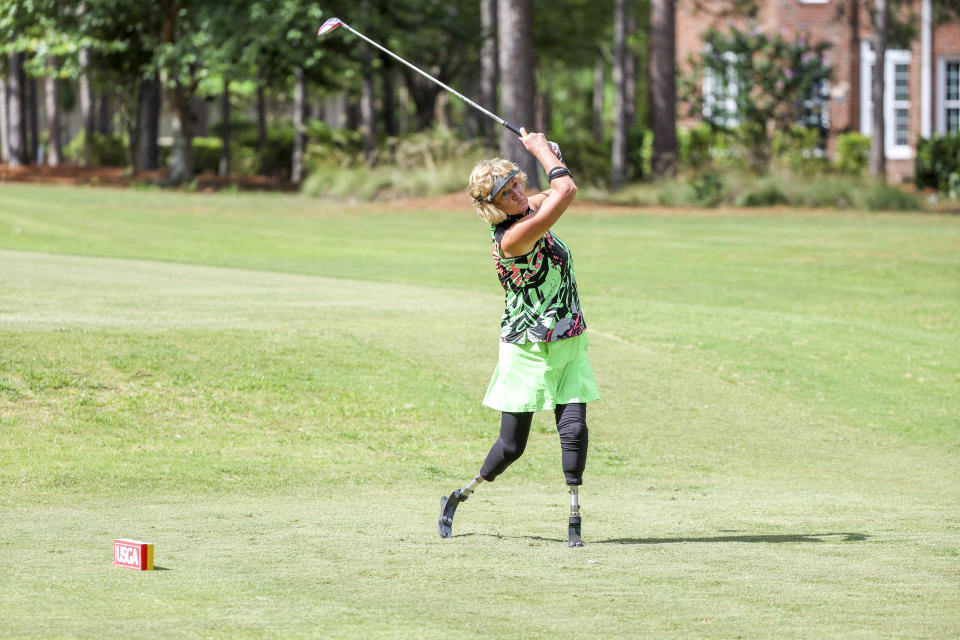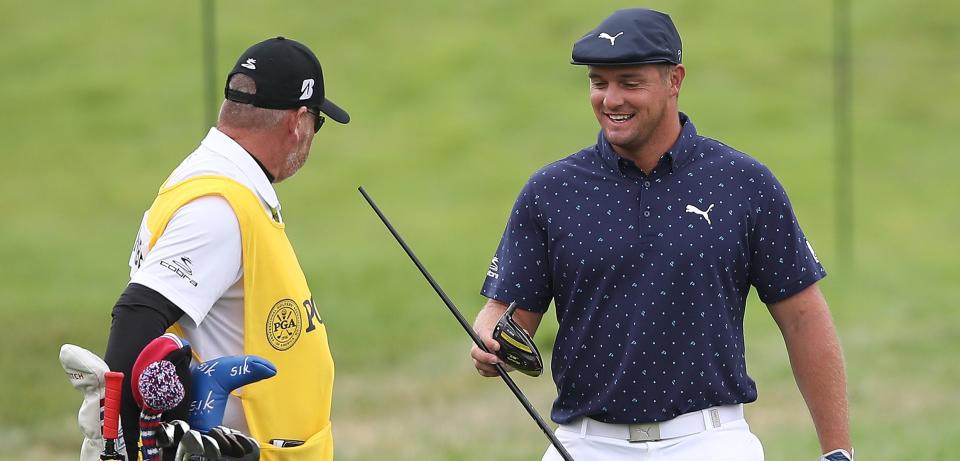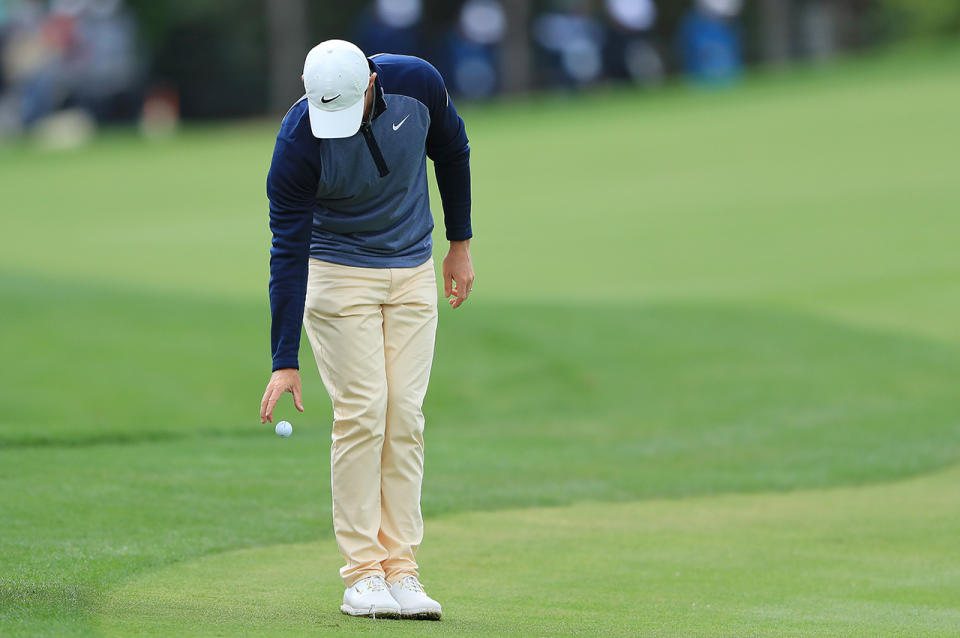USGA, R&A announce changes to Rules of Golf for 2023

Every four years, the USGA and the R&A, the two organizations that maintain the Rules of Golf, make updates and modifications to the code that establishes how the game is officially played. Sometimes the rule changes are significant and at other times, they are clarifications. On Monday, with the announcement of rule changes that will take effect starting Jan. 1, 2023, the USGA and the R&A’s biggest focus is on sustainability and inclusion.
After the 2019 updates to the Rules of Golf were announced, the USGA and the R&A printed two million copies of the rule book. No more. The USGA and the R&A have announced that they will not be making printed copies of the Rules of Golf, forgoing the use of a half billion pieces of paper and saving the organizations significant costs. It also eliminates the costs associated with shipping and distributing the books. Going forward, they hope golfers will utilize the free Official Rules of Golf mobile app on their smartphones.
“We feel really good about the digital means that we have created to access the rules,” said Craig Winter, the USGA’s senior director of rules and amateur status. “Going forward, we’re not going to be relying on the rules book being in every bag. Everybody has a smartphone, and they can download the free app. We’re continuing to move forward and modernize, as we did in 2019, and it connects us to the golfer better. The mobile app is real-time, digital and we can keep them updated.”

Cindy Lawrence hits her tee shot on the 12th during the first round of the 2022 U.S. Adaptive Open at Pinehurst Resort in North Carolina. (Photo: Jeff Haynes/USGA)
A year after the first U.S. Adaptive Open was held at Pinehurst, the USGA and R&A are moving the Modified Rules for Players With Disabilities into the Rules of Golf. Developed by the USGA and the R&A with input from adaptive organizations developed in 1996, the Modified Rules for Players With Disabilities were a set of standardized accommodations that provided courses and tournament committees with guidelines when they hosted events for players with special needs, but as Model Local Rules, they had to be adopted to go into effect. Starting Jan. 1, the modifications will automatically be in place for everyone who needs them.
“Right now, that set of rules sits in the back of the official guide,” Winter said. “We know there are millions of golfers, millions of individuals out there that could be benefitting from this and by moving them into Rule 25 it raises the level of awareness, just like the U.S. Adaptive Open will continue to do. There are rules for individuals that do need to be modified, and the modifications are very practical. The committees don’t need to do anything to make this happen. This really makes the game more welcoming.”
Four other rule changes were also announced on Monday:
Club damaged during round

Bryson DeChambeau hands his broken driver to then-caddie Tim Tucker on the seventh hole during the first round of the 2020 PGA Championship at TPC Harding Park on Aug. 6, 2020 in San Francisco, California. (Photo by Sean M. Haffey/Getty Images)
Starting Jan. 1, golfers will be allowed to replace a club that is broken during a round, provided the club was not damaged or broken due to abuse. Previously, if a weight screw came out of your driver in the middle of a round or a shaft in one of your irons broke after you played a shot, the club was considered damaged, and the Rules of Golf did not allow you to replace the club until after your round.
You will be allowed to replace a damaged club with any club you like; the replacement does not have to be the same type of club or made by the same company, and you can take a reasonable amount of time to replace it. Golfers will be allowed to tighten weight screws that come loose and put weights that come out of the club back in their original position without penalty.
Back-on-the-line relief procedure

Rory McIlroy takes a drop after hitting into the water on the fourth hole during the final round of the Players Championship on The Stadium Course at TPC Sawgrass on March 17, 2019 in Ponte Vedra Beach, Florida. (Photo by Sam Greenwood/Getty Images)
Currently, after hitting into a penalty area, golfers have three options. They can drop a ball where they played their last shot and hit another, adding a one-shot penalty. They can also choose to drop a ball within one club-length of the spot where the ball crossed the hazard (but not closer to the hole), play another shot and add a one-stroke penalty. Golfers can also create a line between the hole and where the ball crossed the hazard, then extend that line away from the hole using those two reference points as far as they like, and drop a ball in a relief area (defined as being one club-length in any direction from the line that is not closer to the hole).
Starting in January, instead of dropping in a relief area, golfers will have to drop their ball in back-of-the-line relief on the line, then play the ball wherever it comes to rest, as long as it remains within one club-length of the spot where the ball hit the ground. Left, right, backward and even forward, closer to the hole, the direction where the ball hops does not matter. If the ball comes to rest inside a circle that is one club length in radius from the spot where the ball was dropped, you play it.
In effect, the USGA and R&A are making golfers go back to the way they dropped the ball on the line before the rule was modified in 2019.
“This will be a focus of education,” Winter said. “Mostly because if someone is using the current rule to their full advantage, if they continue to do that it is going to result in a problem come 2023.”
Ball moved by natural forces
Call this the Rickie Fowler rule. At the 2019 Waste Management Phoenix Open, Fowler hit a chip shot onto a rain-soaked 11th green. The ball rolled across the green, down a slope and into a pond. Fowler found his point of relief on the slope that was not closer to the hole, dropped twice and each time the ball rolled back, into the penalty area (pond). At that point, he was allowed to place the ball where his second dropped ball landed on the hillside, which he did, adding a one-shot penalty before walking back up to the green to survey his next shot. While Fowler was on the green, his ball rolled back into the penalty area, forcing him to repeat the process and add another one-shot penalty for his second ball going into the penalty area.
Starting in 2023, a ball that is moved by natural forces must be replaced if it moves to another area of the course or comes to rest out of bounds after being dropped, placed or replaced.
“This is a pretty uncommon thing,” Winter said. “Again, what do golfers intuitively think they should do? This seems so unusual that you would have to take relief again, that most golfers would think that can’t be right, so I’m going to put a ball back in and play it. That’s what this exception is going to allow you to do.”
Handicap usage in stroke play
Right now, players are responsible for making sure their handicap index at the start of a tournament round is accurate, which puts the onus on golfers to stay aware of handicap revisions and updates. Failing to provide an accurate handicap can result in penalties, but starting Jan. 1, the responsibilities for accurately tracking and providing player handicap information will fall to tournament committees instead of players.
“Players should know their index,” Winter said. “But, when we took a step back and looked at how this plays out in the game, whether it is a paper scorecard that you’re given or it is a digital means of scoring, handicap indexes are available publicly now. It just seems that it makes more sense, to us, to make this a committee responsibility.”

